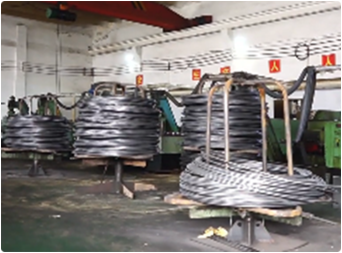Dec . 06, 2024 22:35 Back to list
bolt size meaning
Understanding Bolt Size Meaning A Comprehensive Guide
When it comes to construction, machinery assembly, or automotive projects, understanding bolt size is crucial for ensuring safety, functionality, and durability. Bolts, being integral components in fastening systems, come in various sizes, types, and specifications. This article delves into what bolt size means and why it is essential to comprehend this aspect when working on any project.
What Is Bolt Size?
Bolt size refers to the measurements that define the dimensions and characteristics of a bolt. The main dimensions include the diameter, length, thread pitch, and sometimes the head type and drive style. Each of these factors plays a critical role in determining how a bolt will perform in its intended application.
1. Diameter The diameter, usually expressed in inches or millimeters, indicates the nominal size of the bolt's shaft. It is crucial for selecting the appropriate hole size in the materials being joined. For instance, using a bolt with too large a diameter could lead to a weakened joint, while one that is too small may not provide adequate strength.
2. Length The length of a bolt is measured from the underside of the head to the end of the shaft. Choosing the right length is important for ensuring that the bolt can securely fasten materials without excessive protrusion or insufficient engagement.
3. Thread Pitch This measurement refers to the distance between threads. Coarse and fine threads are commonly used, with coarse threads generally providing better grip and resistance to loosening in softer materials, while fine threads offer better tensile strength in harder materials.
4. Head Type The shape of the bolt's head can affect how the bolt is driven and the type of wrench or tool needed. Common head styles include hex, socket, and flat heads, each chosen based on the specific requirements of the project.
5. Drive Style This refers to the type of recess in the head of the bolt that tools engage with. Different drive styles like Phillips, Torx, or Allen (hex) are used to suit various driving needs and access requirements.
Why Bolt Size Matters
Understanding bolt size is more than just academic knowledge; it has practical implications
bolt size meaning

- Safety Incorrectly sized bolts can lead to structural failure. For example, using the wrong bolt in a high-stress application, such as in vehicles or load-bearing structures, can result in catastrophic failures, resulting in injuries or fatalities.
- Durability A bolt that is too small or made from the wrong material can wear out quickly, leading to frequent repairs or replacements. Selecting the proper size and grade of bolt enhances the longevity of the assembly.
- Efficiency Using the right bolt size can improve assembly efficiency. It ensures that components fit together perfectly, reducing the likelihood of time-consuming adjustments or reworks.
- Cost-Effectiveness Investing in the correct bolt sizes upfront can save significant costs associated with maintenance and repairs down the line. It also minimizes the risk of project delays caused by component failures.
How to Determine the Right Bolt Size
Determining the right bolt size requires a few key considerations
1. Load Requirements Analyze the load that the bolt must bear. High-load applications often require larger diameter or stronger grade bolts.
2. Material Thickness Measure the thickness of the materials being joined to choose the appropriate length.
3. Environmental Factors Consider whether the bolt will be exposed to corrosive environments, as this affects the material choice, like stainless steel versus standard carbon steel.
4. Standards Familiarize yourself with industry standards, such as those from the American National Standards Institute (ANSI) or the International Organization for Standardization (ISO), which provide guidelines on bolt sizes and grading.
In conclusion, understanding bolt size and its implications is essential for anyone involved in construction, assembly, or repair projects. By paying careful attention to dimensions, load requirements, and environmental conditions, you can enhance the safety, durability, and efficiency of your work. Always make informed choices regarding bolt specifications to ensure your projects meet the highest standards of quality and reliability.


